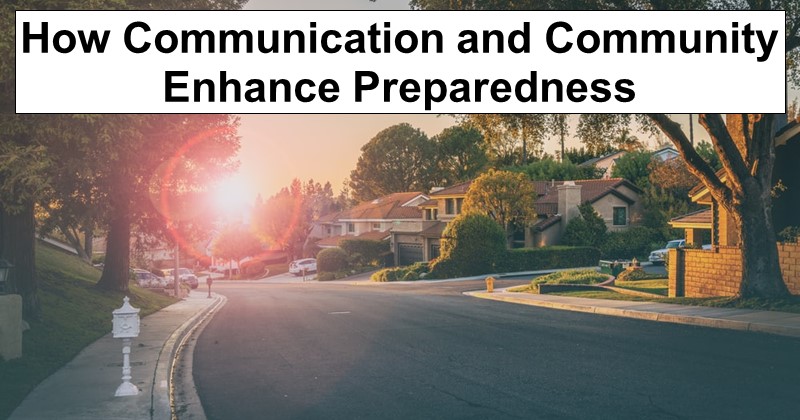For many people, part of the stereotypical American dream involves living in a close-knit community with neighbors you can rely on. It’s important to get to know the people in your community for a variety of reasons. Close communities are great when you need help with something, and when everyone is looking out for each other, it can provide a greater sense of security.
Strong communication efforts within your community can also play into emergency preparedness.
To say we’re living in uncertain times would be an understatement. Though it’s not always pleasant to think about, emergencies happen. Everything from weather-related incidents to problems caused by social unrest, there may be times you need to rely on your community (and vice versa) to keep yourself and your family safe.
So, how can you foster closer relationships with your neighbors, and what should your community emergency preparedness plan look like?
How to Form Community Connections
Whether you’re new to your neighborhood or you just haven’t taken the time to get to know your neighbors, it’s never too late. Forging connections with neighbors can potentially play a huge role in emergency preparedness, especially for those who live alone or who may rely on other’s resources during evacuation or crisis. Don’t put too much pressure on yourself or force relationships. Instead, focus on letting those connections happen naturally. Some of the easiest ways to get to know people include
- Bringing over “goodies”
- Introducing yourself if you’re new to the neighborhood
- Taking a walk around the community and saying hello to people who pass by
- Asking for advice
- Lending a helping hand
Simply “being neighborly” is a great way to form a relationship and eventually establish trust. You might not want to walk up to a new neighbor and start talking about developing an emergency plan right away. It’s important to build a rapport with them first. As that trust continues to build, your communication with your neighbors will improve, and you can start to work out a strategy that will help you all to feel more prepared for emergencies. You’ll also all feel safer, knowing you can rely on each other in the worst of times.
Assign Roles and Responsibilities
Part of a solid emergency preparedness plan involves delegating responsibilities to certain individuals. For example, if you have seniors living in your community, they might need extra help from younger people to evacuate their homes – especially if they have mobility issues. If you have families with young children, they might need access to a larger vehicle or they may even need to leave first to ensure the safety of their kids.
If you’ve decided that having a car isn’t right for you, you’ll need to know who will be driving and which cars will be shared if you need to evacuate. People with larger vehicles like vans make more sense to be “central drivers,” since they can carry more passengers.
People’s “assignments” should greatly depend on their abilities and what they’re willing to do. If one of your neighbors has a large basement, they might be able to volunteer it as a place of shelter during an emergency. If another has a lot of storage space, they might be in charge of keeping nonperishable food and water for the community. When you put your plan in place, make sure everyone not only understands their role but will be a willing participant if/when an emergency occurs.
Create Several Channels of Communication
In an emergency, you may not always have access to the communication channels you’re comfortable with. Or, you might get separated from family members or neighbors you were supposed to stay connected with. Things like cell phones don’t always work during extreme weather events, and your older neighbors might not be well-versed in using things like social media. While those are both excellent forms of communication, they shouldn’t be your only two options.
Having multiple channels of communication is essential for making sure everyone remains safe and has a way to reach each other.
Some of the best channels of communication to consider include
- Cell phones (making sure everyone in the community has your contact information)
- Ham radios
- Social media
- Two-way radio transceivers
Making sure you have ways to communicate will help you coordinate your plans, improve safety efforts, and ensure your family and friends are okay when an emergency has occurred. Different forms of communication can also help you locate each other or figure out how to get to a specific location if certain routes have been blocked off or are impassible.
Forming relationships with your neighbors shouldn’t be a thing of the past. Living in a helpful community and effectively communicating with everyone has multiple benefits. However, you’ll never appreciate those benefits more than in an emergency.
If you haven’t already, foster communicative relationships with the people in your neighborhood. Show your trust by creating an emergency preparedness plan with them, and you’ll all be able to rely on each other when disaster strikes.
[Note: This was a guest post.]

Leave a Reply